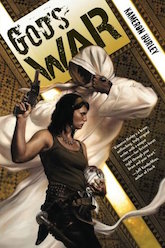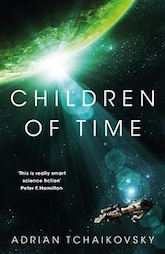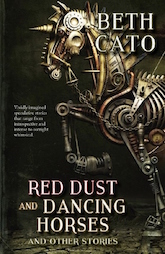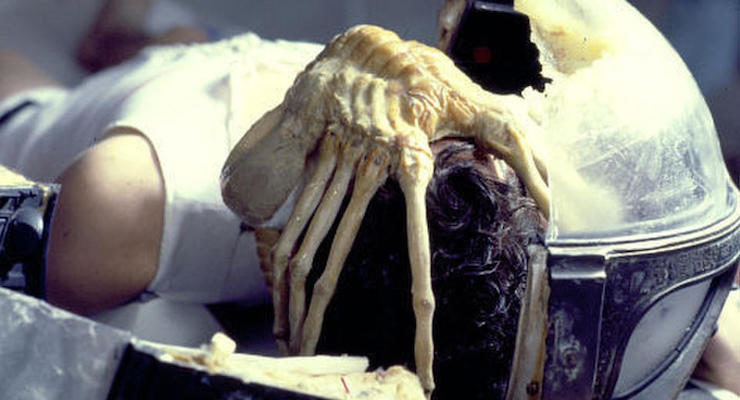Bugs. Arachnids, arthropods, insects, all things of six to eight legs. Anything you wouldn’t want crawling over you in your sleep and dragging you under the bed. Bugs.
They seem so alien. No surprise, given all their features that are so anathema to us autonomous upright primates. Hive minds, exoskeletons, webs, stingers and mandibles, other secretions… And so insects make for some of the best science fiction around, but it’s never exactly cozy.
Warning: all these links are gross. In that special buggy way.
Alien films and Parasitic Wasps
This one’s a no-brainer. The freaky exo-skeletoned, human-mouthed, genitalia-esque aliens, stars of two great movies and a host more than might add up to one decent movie between them, reproduce when the Queen births “facehuggers” that… you know what? You know how this works.
They resemble nothing so much as the horrifying pantheon of parasitic wasps. In fact, the parasitic wasps exhibit behavior that would give HR Giger nightmares. Some land on innocent sleeping cocoons and inject their eggs into the metamorphosing residents. Others actually get the ant lion, a monstrous nightmare predator in and of itself, to open its mandibles so the wasp can inject an egg between them. Into the ant lion’s mouth. Yep, ant lion, that quasi-ankylosaurus look and big mandibles are no protection against a monster babies eating their way out of your mouth.
Unlike the Alien films, in which people just get voracious and sick before the chest-bursters pop out, parasitic wasps’ prey eventually stops eating, but in many cases, still moves into ideal hatching conditions for the monsters taking over not just their flesh, but their brain.
Bloodchild and Botflies
 Octavia Butler’s infamous (and, IMHO, best) short story is about men getting pregnant… with lots of flesh-eating bug eggs. The alien Tlic keep humans in Preserves, and because their eggs do much better if they hatch from human flesh, the Tlic mostly prepare human males to host the babies.
Octavia Butler’s infamous (and, IMHO, best) short story is about men getting pregnant… with lots of flesh-eating bug eggs. The alien Tlic keep humans in Preserves, and because their eggs do much better if they hatch from human flesh, the Tlic mostly prepare human males to host the babies.
The hero of Bloodchild sees a rather horrifying “birth” when Tlic babies eat their way out of a man who has escaped his controlled conditions.
And it’s super-gross.
Butler was inspired by her fear of the botfly. This one lays its eggs on mosquitos, but only as a vector, so the mosquito can then implant the botfly in your flesh, where it will hatch and crawl out. Oh! You’re a daddy now, to a little worm. It’s rather disgusting, but it inspired one of Butler’s best works, with her usual meditations on slavery, adaptation, symbiosis and dependence.
God’s War and Remote-Controlled Beetles
 This one is more of weird human behavior imposing on the poor bugs.
This one is more of weird human behavior imposing on the poor bugs.
The “bugpunk” of Kameron Hurley’s God’s War and the rest of the Bel Dame Apocrypha series is, on its surface, magic, but it’s really a refined science, using pheromones and other stimulants to control a wide variety of bugs, big and small. In this sense, the “magicians” of the book are more like electricians.
We might not need to spread various forms of human culture across a wide swath of planets to get bugpunked, though—scientists at DARPA have been working for several years to create “cybugs,” bugs who are injected with microchips during larval or chrysalis stages. (Which kind of makes humans the parasitic wasps in this scenario. Hmm…)
The “cybugs” would then have all sorts of interesting applications for the humans who control them—scouting out a battlefield or a rescue zone, or even generating electricity from the rotations of their wings. The last would pretty much put us on a path to God’s War. As the setting of God’s War is a bit of a rough place, aspiring Nyxissas, hit the dojo now.
Children of Time and Slaver Ants, & Pretty Much Anything Arachnic
 Adrian Tchaikovsky’s Children of Time is a mindblowingly weird and forward-looking science fiction novel, with a dozen different ways to explain the premise, but for brevity’s sake: there was an uplift/terraforming project. It was supposed to uplift monkeys. Instead, we got spiders.
Adrian Tchaikovsky’s Children of Time is a mindblowingly weird and forward-looking science fiction novel, with a dozen different ways to explain the premise, but for brevity’s sake: there was an uplift/terraforming project. It was supposed to uplift monkeys. Instead, we got spiders.
From there, things get interesting.
(Beware: if you’re an extreme arachnophobe, this novel will either convince you that you were wrong, or make you scream and throw your Kindle/paperback out the window.)
Tchaikovsky is an arachnophile and bug-o-phile in general. So his sentient spiders learn to chemically manipulate ants to use them for purposes from fighting to mining, to working as a living computer, all through pheromones and smell signals.
It’s reminiscent of the slaver ants, though not nearly as cruel. Slaver ants move into another species’ nest, kill the adult ants, and enslave the next generation of the pupae. They do this by using the Dufour’s gland, which secrets the chemicals and pheromones so the adult ants they’re wiping out become confused and turn on one another. Basically, they pump out a steady stream of ANGER like little ant Palpatines in a nest full of Anakins.
However, the slaves don’t quite go willingly. They’ll raise their own pupae in slavery, but in some cases they’ll tear the actual slaver pupae to pieces. It’s a common enough tendency that scientists speculate that slavery among ants might soon die out.
“An Echo In The Shell,” The Metamorphosis, and Cockroaches
 Kafka’s classic The Metamorphosis, and Breath of Earth author Beth Cato’s great riff on it, “An Echo In The Shell,” (also available in her new collection) both feature humans that turn into cockroaches. In Kafka’s original, Gregor Samsa is constantly reminded that, once he becomes a “monstrous vermin,” his usefulness to his family and society has ended, while in Cato’s riff, an elderly women is more and more alienated from her grandchild as she transforms into said cockroach.
Kafka’s classic The Metamorphosis, and Breath of Earth author Beth Cato’s great riff on it, “An Echo In The Shell,” (also available in her new collection) both feature humans that turn into cockroaches. In Kafka’s original, Gregor Samsa is constantly reminded that, once he becomes a “monstrous vermin,” his usefulness to his family and society has ended, while in Cato’s riff, an elderly women is more and more alienated from her grandchild as she transforms into said cockroach.
Kafka reminds us of the way a working-class world treats people as disposable, and the way a working person’s life changes when they become chronically ill, depressed, anxious or otherwise unable to keep up with the rat race—a “vermin.” Cato looks at the same themes when you apply them to aging and dementia and the cold fact that dementia can’t be changed by pluck and hope.
But, weirdly enough, cockroaches actually do exhibit individual behavior and appear to have personalities. Experiments that studied how roaches reacted in the classic “run from the bright light” scenario showed that some roaches explored more territory, while others hung back, in the same way that different humans in a crisis will react differently to reach the same goal. It’s notable to see the difference between roaches and more hive-minded insects like termites or ants.
So it might be that cockroaches, could they answer Kafka and Cato, would be offended to see themselves used as such broad metaphors for dehumanization. They got dreams too.
There are almost as many other insect stories and books as there are species of insect, most likely. Some highlights: E. Lily Yu’s “The Cartographer Wasps and the Anarchist Bees,” Thoraia Dyer’s “The Wisdom of Ants,” E. Catherine Tobler’s crime-fighting “The Indigo Mantis,” Kij Johnson’s “At the Mouth of the River of Bees,” Elaine Cuyegkeng’s “The First of Her Name,” and of course, George R.R. Martin’s supremely creepy Sandkings.
Spencer Ellsworth’s newest novel in the Starfire Trilogy, Shadow Sun Seven, releases November 28th, and focuses on a heist through the guts of an air-sucking space tick. He is also the author of A Red Peace, first in the Starfire Trilogy, and also a prime source of space bugs. His short fiction has appeared in Lightspeed Magazine, F&SF, and right here at Tor.com. He lives in the Pacific Northwest with his wife and three children, where he teaches, plays music, writes and gardens, the last giving him more time to commune with bugs.











“Sandkings” is such a great story. Martin was so good back when he still finished stuff, before he went creatively bankrupt.
“Love is the plan, the plan death” – James Tiptree Jr.
Seanan McGuire Mira Grant’s “Parasite” series, in which genetically engineered tapeworms which are meant to improve people’s health end up causing a of zombie outbreak. Completely different from her “Feed” series, in which the zombies are the result of two genetically engineered viruses combining, (again, with the best of intentions) plus politics!
The xenomorph lifecycle is actually reminiscent of the lifecycles of trematode flatworms as well – the face-hugger is a way of delivering an embryo to a definitive host, the same way as a trematode metacercaria does. However trematodes don’t become free-living predators as part of their lifecycles, so the wasp bit fits well there.
@@.-@ You forgot that the tapeworms also include DNA from the completely real brain parasite Toxoplasma gondii, which humans frequently get from cat litter and which is hypothesized to make us more obsessively attached to our cats (no, really).
Great book. . .though after reading it you will never eat sushi, clean the cat box, or possibly sleep again!
I remember reading a long time ago a satirical short story in a 60s or 70s sf anthology, the theme of which was that both Americans and Soviet commanders thought that a humanity-destroying nuclear war was inevitable and would probably kill off everything except insects. The Soviet response was to create genetically engineered super-ants try to make sure that at least the idea of communism would survive, while the Americans created super-cockroaches to preserve American rugged individualism.
Unfortunately, I can’t remember the author or how the story ended.
It’s hard to mention without being somewhat spoilery, but there’s Missile Gap by Charlie Stross (which you can read here). Suffice to say it involves the Cold war and that insects do come into it, (along with a newly flat Earth, and Yuri Gagarin captaining a nuclear Ekranoplan.)
The xenomorph lifecycle is actually reminiscent of the lifecycles of trematode flatworms as well – the face-hugger is a way of delivering an embryo to a definitive host, the same way as a trematode metacercaria does.
Also the very weird parasitic barnacle (yes, barnacle) Sacculina carcini which has a free-swimming larval form, a kentrogon, that attaches to the carapace of a crab and then injects, basically, its insides into the host, leaving its empty husk to fall off. Once inside it does a lot of fascinating things including parasitic castration, moult inhibition and behaviour modification. Look it up.
6, sounds familiar, but I don’t know the name either, this resource might help.
I’m gonna mention my favourite Bug movie. It is Godzilla vs Gigan, space cockroaches from the future come to conquer Earth and bring a kaiju with them.
I’ve always associated Farscape‘s Pilot with a (benevolent) ant-parasite, given how he is biologically wired into Moya’s central nervous system.
I should add that Sacculina also causes transgender behaviour in its male hosts! Now, wouldn’t that be an interesting SF story to write…
I don’t remember to what extend, but all kinds of real-world parasites are sidebars in Scott Westerfeld’s _Peeps_, while the main story revolves around another (fictional? It’s been a while) parasite.
Of course, insect behaviour (and the drastic modification thereof) is a big part of _Worm_, an excellent (if absurdly long and dark) web serial.
Those with gray hair should remember Phase IV book and movie in the 1970s by Barry Maltzberg. Scary smart bugs.
What the story from the 1940’s that inspired mimic.